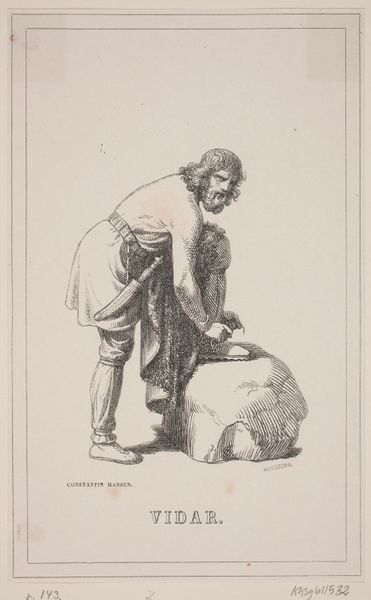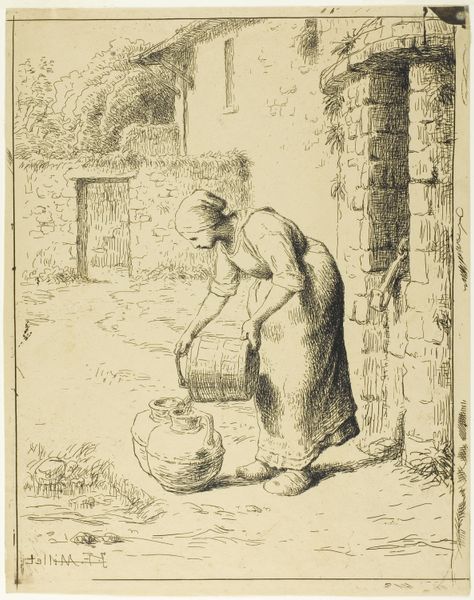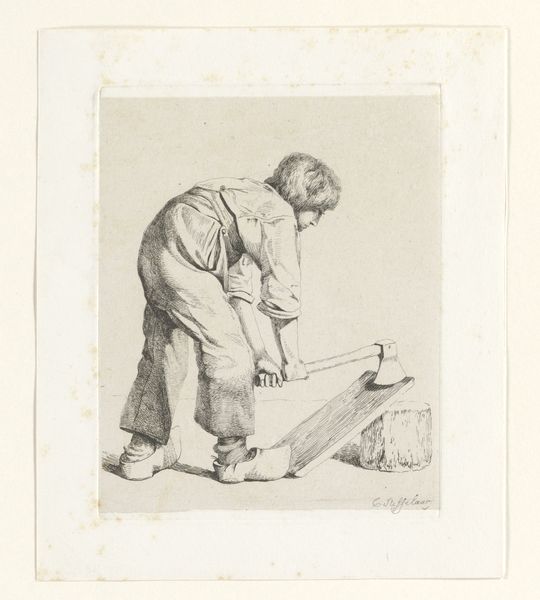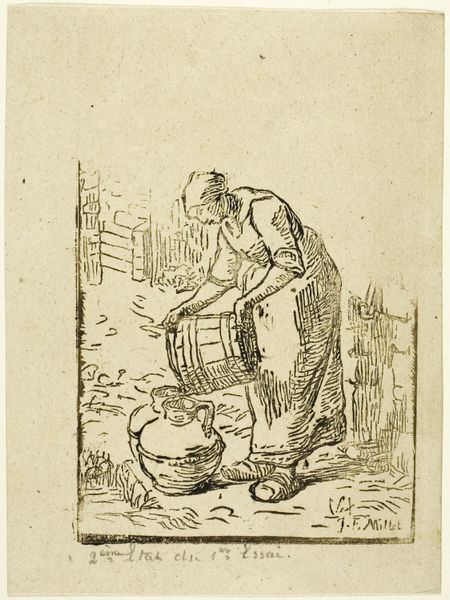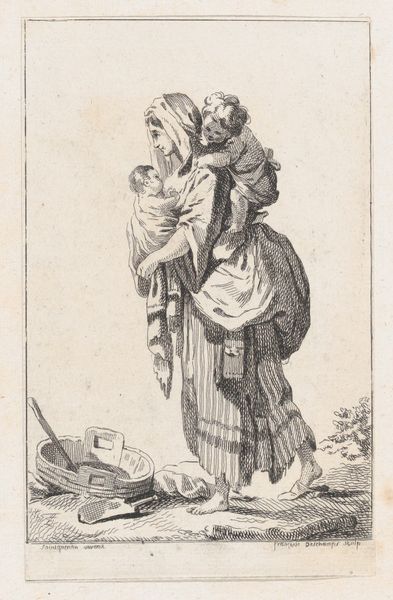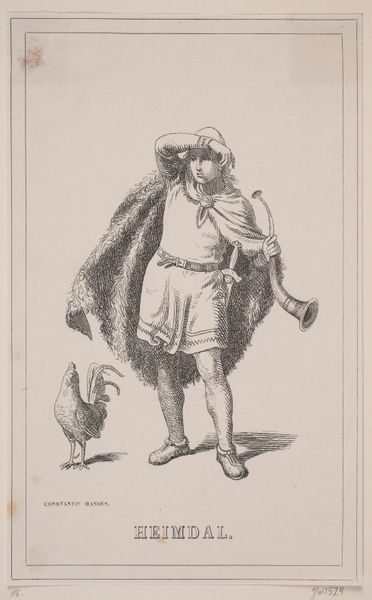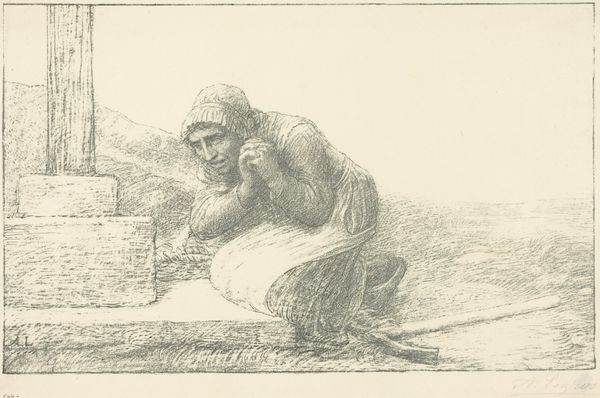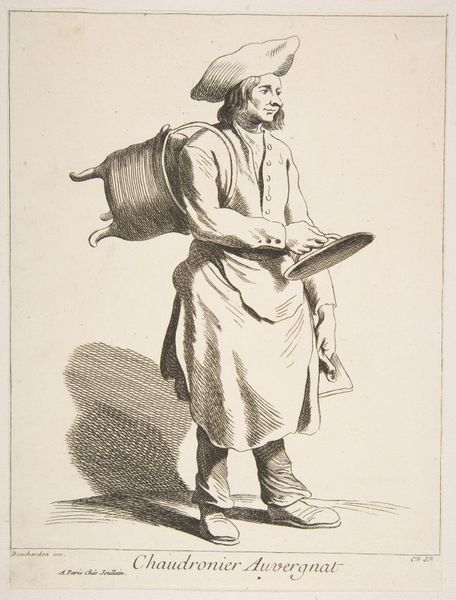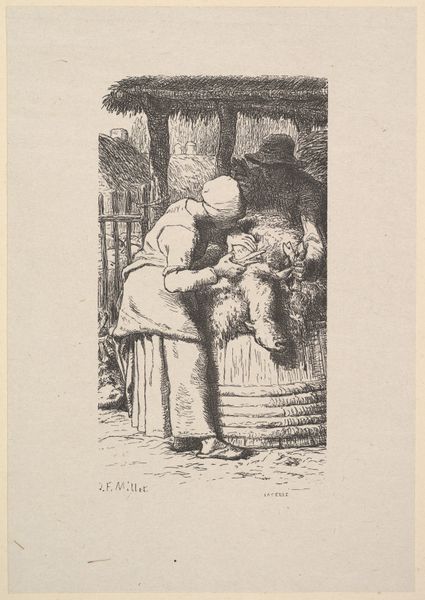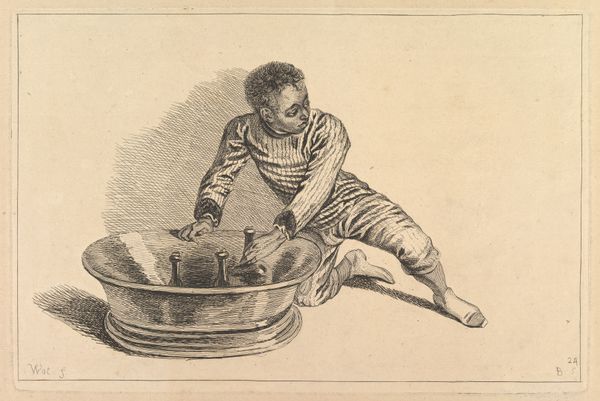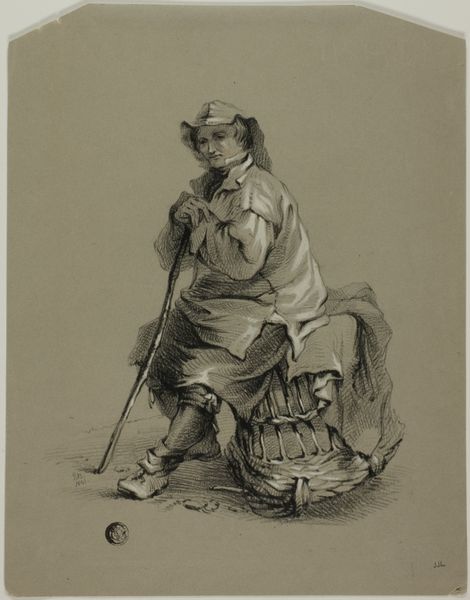
Vidar. Illustration til Fabricius' Danmarks historie 1, 143. 1854
0:00
0:00
Dimensions: 137 mm (height) x 104 mm (width) (bladmaal)
Curator: Here we have H.C. Henneberg's "Vidar. Illustration til Fabricius' Danmarks historie 1, 143.", a woodcut from 1854. Editor: It’s immediately striking how raw and gestural the marks are, almost like an unfinished sketch despite being a print. The subject, hunched over this… is that a stone? He seems deeply engaged in some task. Curator: The figure you see before you is indeed Vidar. He is the Norse god fated to avenge Odin's death at Ragnarök by slaying the wolf Fenrir. And that object? That’s an exceptionally large shoe, I think. Editor: A shoe! Of course. I see now the context of avenging Odin – in Norse mythology Vidar is also a deity of vengeance, whose divine power stems from his symbolic shoe, an object central to the fulfillment of destiny. The composition seems carefully designed around this cultural trope. Curator: Notice how Henneberg employs a complex web of hatching and cross-hatching to define form, giving the work depth and modeling. The way he renders the texture of the hair and beard with such precision contrasts with the more simplified rendering of the rock or shoe; consider how the textural detail focuses our gaze on Vidar’s expression. Editor: Absolutely. And speaking of gaze, Vidar's eyes meet the viewer directly, an almost challenging look as if he’s daring us to understand the weight of his destiny and symbolic attributes. This confrontational gaze also lends a striking sense of the individual psychology and inner thoughts that Vidar carries. It’s fascinating to see how a cultural symbol of revenge becomes internalized into the self. Curator: The restricted palette focuses our attention on the figure and his action. He’s actively engaged with fate itself. Editor: Seeing the Norse mythological character rendered this way – the formal simplicity and symbolic density really capture the tragic dimension. Curator: Indeed. And while a rather direct representation, we have uncovered, in the piece’s composition, medium and affect, many intriguing avenues of consideration for the viewer.
Comments
No comments
Be the first to comment and join the conversation on the ultimate creative platform.
